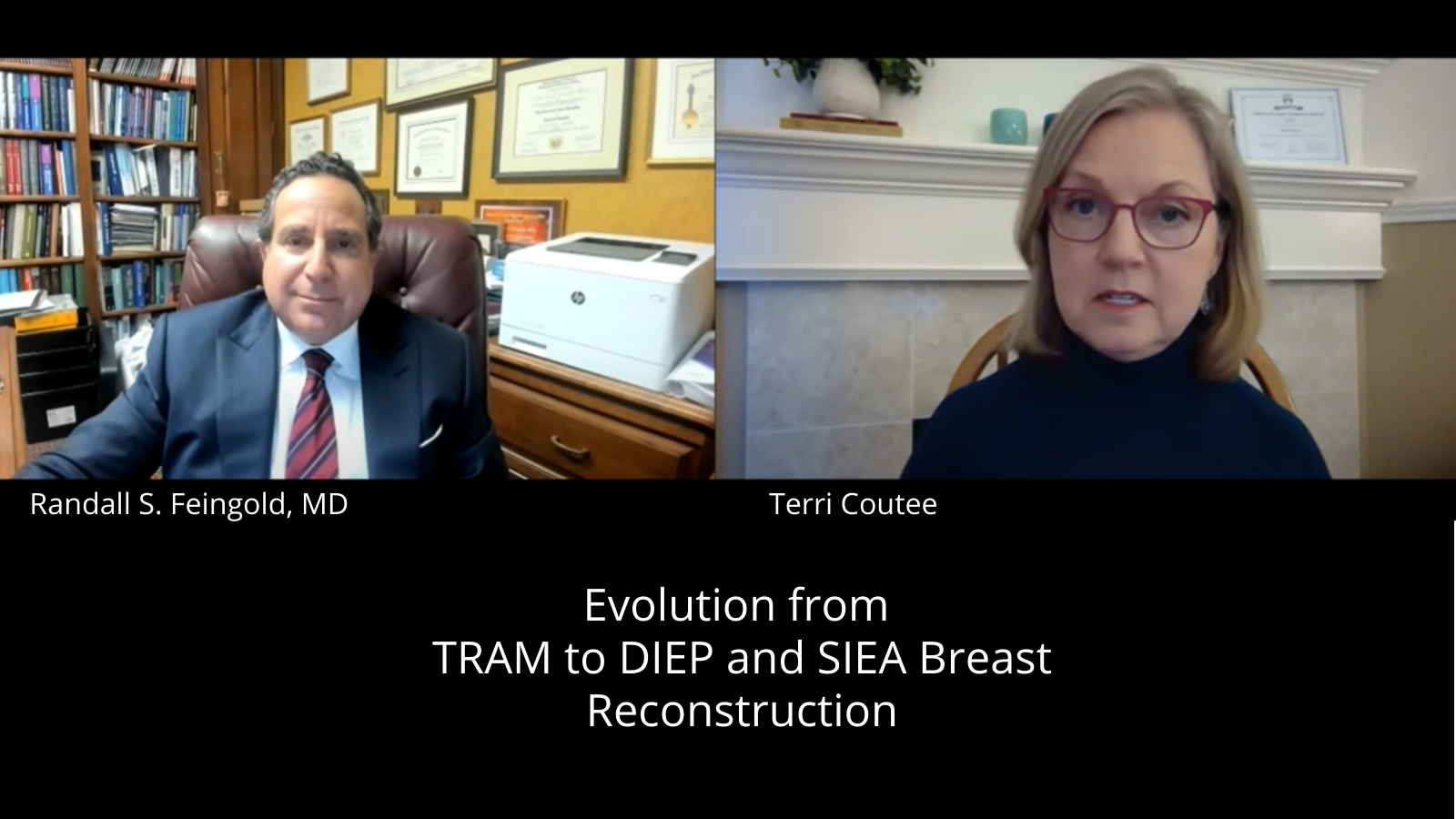From TRAM to DIEP and SIEA: Dr. Feingold Discusses the Evolution of Abdominal-Based Flaps for the DiepC Foundation
December 31, 2021
The DIEP flap is a ubiquitous and vital part of any conversation about natural tissue breast reconstruction. However, that was not always the case.
“When I first went into practice in the mid-1990s and started doing DIEP flaps, they weren’t well accepted. I wasn’t able to tell patients or other surgeons in the community that it was the standard of care yet, because I think the standard of care is what most people can do safely in most communities. At that time, the TRAM flap was what most plastic surgeons offered,” Dr. Randall Feingold explained in conversation with Terri Coutee on the DiepC Foundation’s YouTube Channel.
Dr. Feingold joined Terri to talk about the evolution of natural tissue reconstruction, particularly the shift from the TRAM flap to DIEP and SIEA flaps as preferred breast reconstruction approaches. Dr. Feingold used a series of slides to show how surgeons perform TRAM, DIEP, and SIEA flaps and to highlight the varying levels of invasiveness.
The TRAM sacrifices the rectus muscle, meaning that a patient’s “six-pack” becomes a “three-pack,” causing abdominal wall weakness. He said that he and others knew that a better approach had to exist, even decades ago.
“It became obvious to many of us, twenty or more years ago, that we wanted to find a better solution where we could transplant that fat without disturbing the muscles, and that led to the development of the DIEP flap.”
The DIEP flap uses the same ellipsis of fat and skin from the abdomen, but instead of carrying the blood supply with a muscle, skilled plastic surgeons use microsurgery to tease the blood vessels out of the muscle. He said that this approach constituted a revolution and a paradigm shift for patients and doctors.
“She has less pain, she has a shorter hospital stay, there is less muscle damage—if any at all—and the success rate of these transplants in the hands of experienced microsurgeons is well over 90%.”
The SIEA flap is even less invasive than the DIEP flap. Dr. Feingold explained that the SIEA flap uses a blood vessel that runs outside of the rectus muscle, which means that surgeons do not need to make any incision in the muscle to use that blood vessel. Unfortunately, only a minority of patients have a superficial blood vessel that is large enough to facilitate this procedure.
“If we are fortunate enough to find a large enough SIEA vessel when we are taking our patients to the operating room for a DIEP flap, we may make that intraoperative decision to use that blood vessel, because it will be a more optimal operation,” he said.
Watch the full discussion, including Dr. Feingold’s slides, here!
A Patient’s Persistence Gets her the Right Care
Peggy learned that she had DCIS in her left breast in 2018 over the phone. The impersonal approach hurt. “I guess I was assuming that…
